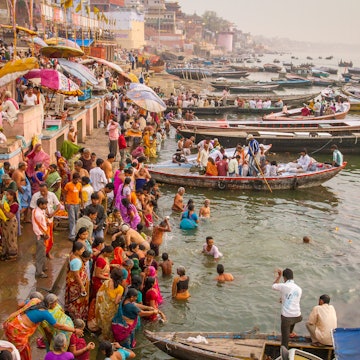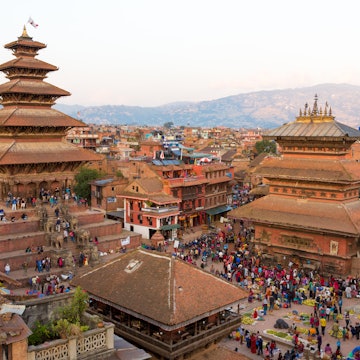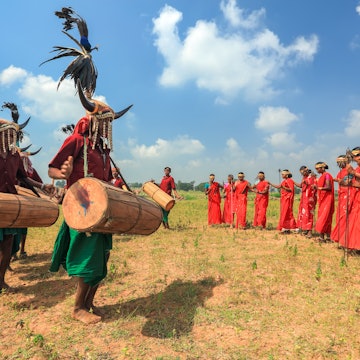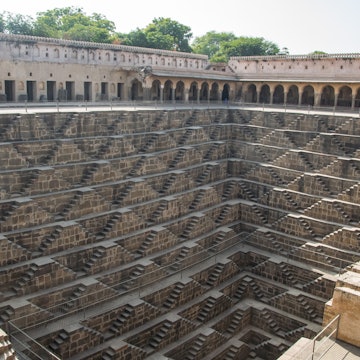

Stuck in the middle of the mighty Indian subcontinent, Madhya Pradesh was always a prime target for conquest. Every empire worth its arrows made incursions into these dusty plains, leaving an indelible mark on the region’s architecture, culture and people.
There are stories here to rival the romance of Rajasthan and the siren song of the Indian south, but most travellers zip through the state, pausing just long enough for a tiger safari in one of the state’s famous national marks but missing its myriad human marvels.

We encourage you to linger a while on the journey south from Rajasthan or Uttar Pradesh, in backwater towns with all the grandeur of Agra and Udaipur but few of the crowds. Madhya Pradesh has temples dripping with erotic carvings, ghost cities forged by Muslim conquerors, Buddhist stupas raised by a penitent emperor and the mighty palaces of millionaire maharajas lording it over the plains, all telling a tale of warring empires and the ultimate futility of the pursuit of power.
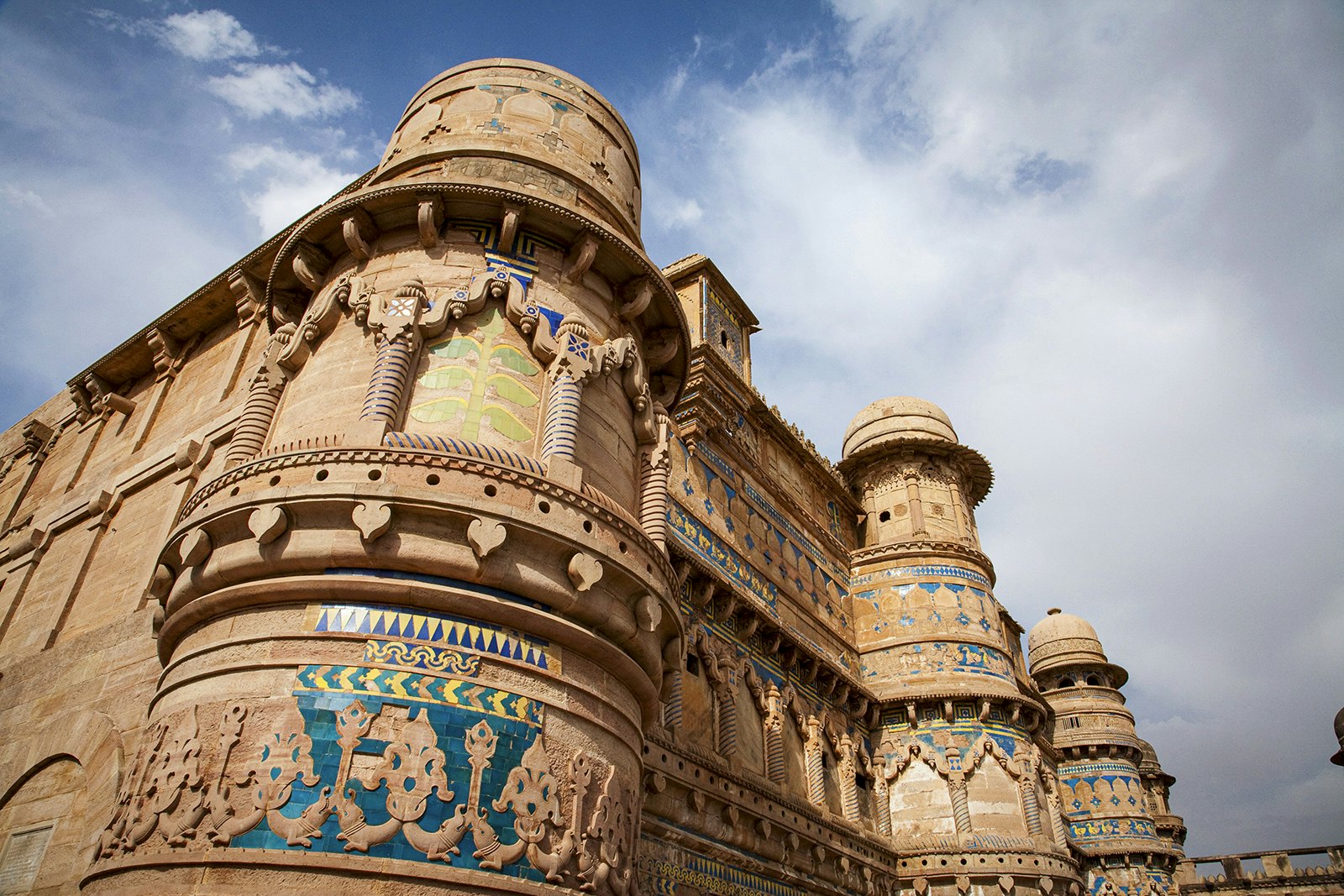
Gwalior: Madhya Pradesh’s great prize
The empires to rise and fall on the plains of Madhya Pradesh left an unusually rich imprint on the cities they left behind, creating a stone-hewn map of their ideas and identity. In the ancient city of Gwalior, a short hop across the state border from Agra, that identity was all about grandeur and power. The Hindu kings of the powerful Tomar dynasty raised mighty Gwalior fort to project their status, but they soon attracted the attention of the sultans of Delhi, who stormed into town and remodelled the fort in their image in 1517.
Wandering around Gwalior fort today, the Islamic influence is obvious from the brilliant turquoise tiles set into its crumbling sandstone walls and the fort’s minaret-like towers, caped by elegant domes. Gazing out from the bastions over the dry and dusty city, it’s easy to imagine how the sultans, and later the Mughals, must have felt invincible in their hilltop citadel, only to be rudely awakened when the Marathas seized Gwalior in 1754 and restored the fort’s Hindu magnificence.

The last owners of Gwalior fort were the fabulously wealthy Scindia family, who still reside in the gleaming, bone-white Jai Vilas palace just south of the walls. Living up to every expectation of Indian maharajas, the Scindias filled their lavish home with stuffed tigers, flattering family portraits and chandeliers so heavy that elephants had to be dangled from the ceiling to prove it could take the weight.
Sex in sandstone at Khajuraho
Just down the road or rail tracks in Khajuraho, it was Hindu culture that flexed its creative muscles, creating some of the most extravagant and provocative temples ever seen in India. While the Muslim rulers of Gwalior were obsessed with power, at Khajuraho, the focus was on communing with the divine. Oh, and sex. Lots and lots of sex.

The temples of the Western Group, clustered together in a dry park just west of the main market, resemble a 3D representation of the Kama Sutra – which as a Hindu philosophical text, was almost certainly an influence on its sculptors and architects. Temples such as the graceful Lakshmana Mandir are covered with exquisite carvings of sensuous dancing girls, and cavorting couples in positions of surprising variety and physical dexterity. Orgies, three-ways, oral sex, bestiality – it’s all there, carved in intricate detail in glowing yellow sandstone.
This isn’t just stone pornography. The carvings at Khajuraho are physical representations of the concept of kama – the celebration of love, desire and pleasure of the senses – one of the four goals of life in Hindu philosophy, along with dharma (virtuous living), artha (the search for prosperity) and the pursuit of moksha (liberation from ignorance and the cycle of rebirths). Compared to the stern outlook of Madhya’s Muslim rulers, the unabashed joie de vivre of Khajuraho’s risque temples couldn’t be more pronounced.

Sanchi: defined by dharma
Rolling west across the plain towards the once-regal, now scarred city of Bhopal, an alternative vision of India awaits at Sanchi, where the great Buddhist emperor Ashoka raised a mighty stupa as penance for the suffering he wreaked on the people of Kalinga in Odisha during his empire-building rampage. The historical Buddha lived and died on the plains between Nepal and northern India, but it was Ashoka who did the heavy lifting to spread Buddhism to every corner of the subcontinent.
In contrast to the militaristic bombast of Gwalior, and the erotic abandon of Khajuraho, Sanchi was built from a position of introspection. Haunted by his legacy, the repentant Ashoka raised one of the first Buddhist stupas in India, adorning the gateways surrounding the stone-faced dome with panels telling the life story of the Buddha and his own righteous reinvention as a Buddhist convert. The carvings of back-to-back lions supporting the southern gateway became the state emblem of India at Independence in 1947.

This wasn’t just an architectural statement of Ashoka’s commitment to living a better life. If you wander through the gardens around the great stupa, you’ll find the remains of temples, monasteries, assembly halls and shrines, recalling Sanchi’s status as a great centre for spiritual learning. Sanchi’s end, however, was no more dignified than that of Madhya’s Hindu and Muslim empires; resurgent Hinduism eclipsed Buddhism and the site was left to ruin in the 12th century. Reports from just a few decades later described a handful of devotees clinging on amidst the fallen columns and collapsed masonry.

Rich ruins in Mandu
India is awash with ruined cities that expose the vain glory of empire. Karnataka has Hampi, where Hindu Vijayanagar fell to the Deccan sultanates in 1565, and Uttar Pradesh has Fatehpur Sikri, the once-grand capital abandoned by the Mughal emperor Akbar in 1585. Not to be outdone, Madhya Pradesh serves up its own achingly atmospheric lost city at Mandu, perched atop a green-capped plateau rising between rocky ravines.
Founded by the Afghan governor Dilawar Khan on the site of a vanquished Hindu fortress, Mandu rose as an independent kingdom in the early 15th century, and its rulers filled the plateau with palaces, mosques and mausoleums of striking grace and sensitivity. Predictably for those tumultuous times, Mandu was the setting for a centuries-long game of king-of-the-castle between rival Afghan, Mughal, Gujarati and Maratha armies, before finally being abandoned to the monsoon rains in the 1730s.

What marks Mandu out from other ghost towns in the plains is its position off the mainstream tourist map, not really on the way to or from anywhere. Most visitors are Indian, and with a dawn start, it’s possible to have the ruins almost entirely to yourself, as the morning light spills through ruined archways into ceremonial courtyards, stepwells and sundered pleasure gardens. Savour the peace and quiet; once you rejoin the mainstream travel map in Rajasthan, UP or Maharashtra, you’ll miss Madhya’s calm grandeur and dignity.
https://shop.lonelyplanet.com/products/india-travel-guide-17








